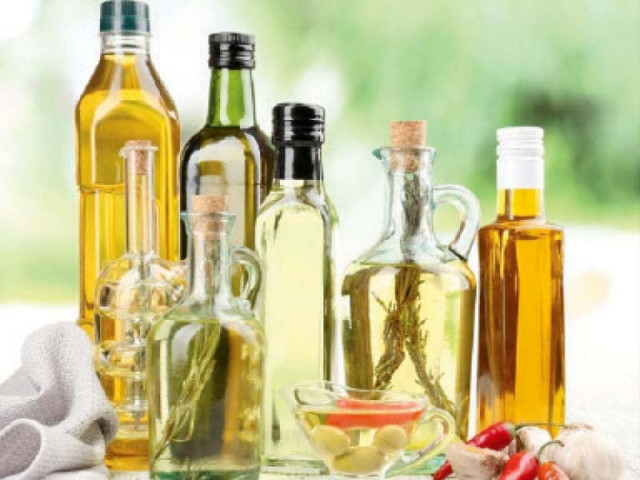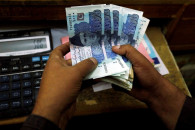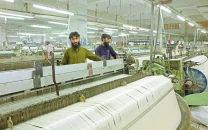Costly veg oil: a test for Pakistan
Country plans to grow olive trees on large scale to meet edible oil demand, cut trade deficit

As Ukraine and Russia are the top two exporters of sunflower seed oil, the military conflict between them has led to sharp spikes in vegetable oil prices among food commodities.
The FAO Vegetable Oil Price Index averaged 248.6 points in March, up 46.9 points from February and hitting a new record high.
Pakistan, the world’s largest vegetable oil importer, has also seen vegetable oil prices skyrocket recently. It inevitably pushed up domestic inflation. Pakistan’s annual vegetable oil consumption is 5 million tons, while the share of some less-consumed vegetable oils such as mustard oil is about 400,000 tons.
Around 30% of the demand is satisfied by domestically produced oilseeds, while the remaining 70% is met by imports. Due to the increase in import prices, it is a severe test for Pakistan’s foreign trade deficit and foreign exchange reserves.
Pakistan, which has a large area of land suitable for growing olive trees, has been producing olive oil since 2010 with the help of countries such as Italy and Spain.
Currently, it produces about 1,500 tons of olive oil and 830 tons of table olives per year, all of which are consumed domestically.
Pakistan has set a target of producing 16,000 tons of olive oil by 2027. Will this fulfill the country’s idea of “vegetable oil freedom”?
Earn Rs400,000 per acre
Syed Yousaf Ali, a farmer with a 100-acre estate, has been growing olives since 2006. In his opinion, the olive tree has low requirements of land. “Poor land and drought are nothing. The only thing matters is that the olive tree requires well drained, unpolluted soil.”
Another farmer, Malik Shafiq, described the olive tree as a “tough plant”. It was an uneven wasteland when he started planting it a decade ago. “It is not affected by the worst weather conditions. It can grow in the wasteland, and the cost is half that of other crops.”
Farhan Pasha, the scientific officer in charge of the olive programme at the Barani Agricultural Research Institute, told China Economic Net (CEN) that the main areas in Pakistan fit for olive cultivation are Balochistan, Khyber-Pakhtunkhwa (K-P) and Punjab, in addition to Azad Jammu and Kashmir and Gilgit-Baltistan (GB).
Pakistan has 10 million acres of land suitable for olive cultivation, which is almost twice as much as Spain, the world’s largest olive oil producer. As olive trees are able to survive in dry and arid conditions, not fit for other crops normally, they don’t compete with other fruit trees, grain crops or oil crops in these areas. To encourage olive cultivation, the Pakistani government has planned to issue olive oil marketing and branding certification to the private sector.
The goal of it is to plant over 50,000 acres in the country by 2022. Now, Pakistan is the only South Asian country to be included in the International Olive Council. Inamul Haq, who works as a horticulturist at the Barani Agricultural Research Institute in Chakwal, told CEN that the local government has spared no efforts to subsidise olive cultivation.
“Since 2015, the Punjab government has been providing subsidies to local gardeners to turn the Potohar region into ‘Olive Valley’, that is, providing olive saplings free of charge for plantation.”
In the past five years, nearly 1.4 million olive trees have been planted in the Potohar region, covering almost 9,000 acres of land.
The project has made use of less fertile and undeveloped land. In addition, the government has offered up to 70% subsidy on the installation of solar power systems and nearly 60% subsidy on drip irrigation systems, with an estimated 800 families getting benefits and turning their less fertile land into olive groves. The government has also provided a 50% subsidy to agricultural machines that may be needed during harvest seasons, such as shakers.
The advantages of growing olive trees are obvious. On the one hand, they can meet local demand for edible oil while reducing trade deficit, on the other hand, they mitigate climate change and effectively address the challenge of water security.
It is no wonder that provincial governments have introduced subsidies to encourage olive cultivation. Due to its favourable climate and geographical location, the quality of olive fruit produced in Pakistan is among the best around the world despite its late start.
The main parameter used to define olive oil quality is acidity. If the acidity is less than 0.8%, it is marked as extra virgin olive oil according to the International Olive Council, which is the highest grade of olive oil.
A lot of Pakistani olive oil can meet this standard. According to Inamul Haq, the quality of olive oil produced locally in Pakistan is almost the same as that of well-established olive producing countries.
Farhan Pasha told CEN that Pakistani olive oil from Quetta won the highest grade at a recent competition held in Italy.
THE ARTICLE ORIGINALLY APPEARED ON THE CHINA ECONOMIC NET
Published in The Express Tribune, May 3rd, 2022.
Like Business on Facebook, follow @TribuneBiz on Twitter to stay informed and join in the conversation.



















COMMENTS
Comments are moderated and generally will be posted if they are on-topic and not abusive.
For more information, please see our Comments FAQ